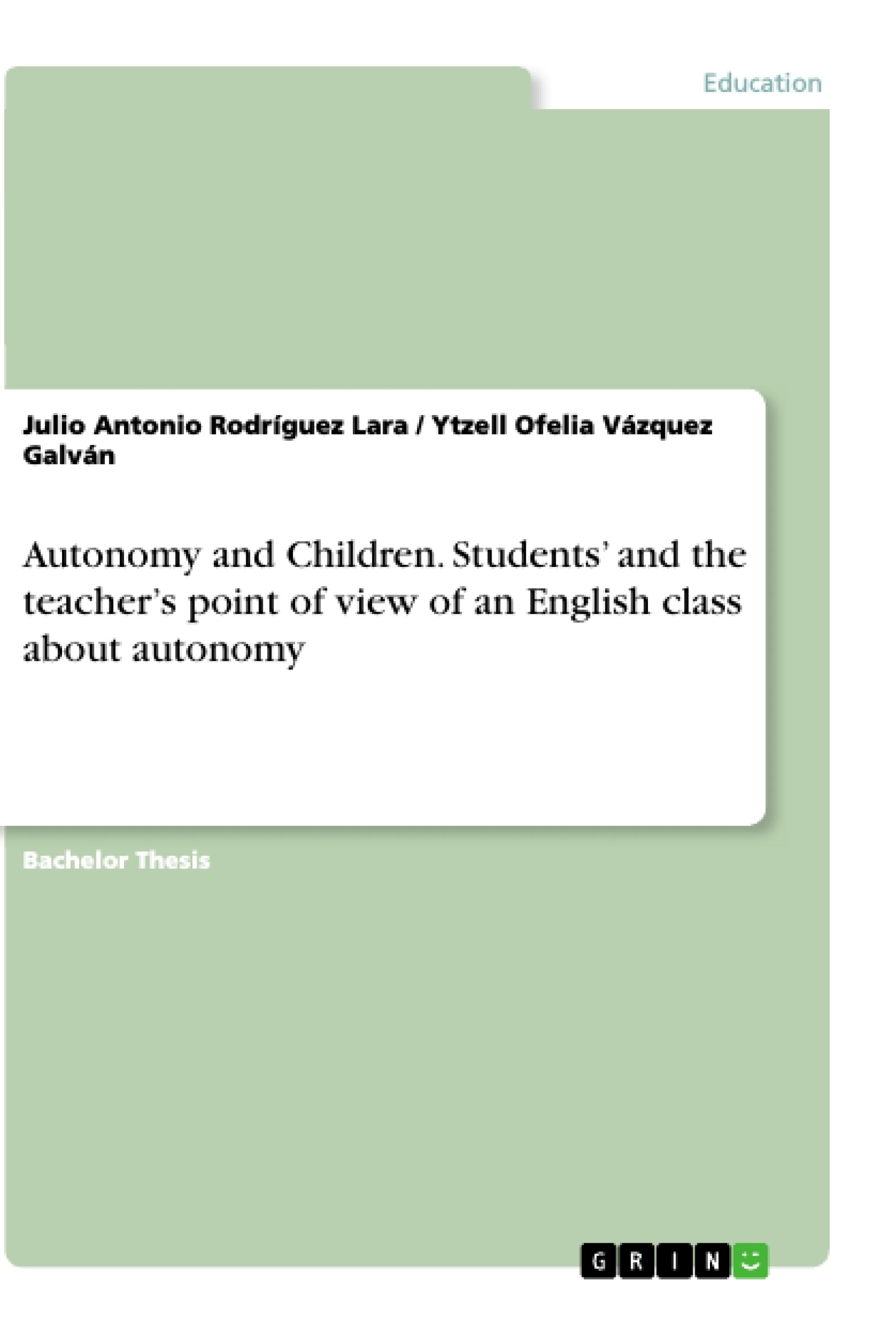Learning a foreign language may sometimes become difficult because of the many factors that interact in this process, for example culture, grammar structures, vocabulary, idioms… Some people think that acquiring a foreign language on their own is not possible because students need a teacher who guides them, but if they wanted to, they could be an autonomous learner. Autonomy can take place both inside and outside the classroom; it depends on the willingness, positive attitudes and responsibility that students have.
Inhaltsverzeichnis (Table of Contents)
- Introduction
- Chapter 1: Contextual Framework
- Continuous Education Program in the School of Languages
- Purpose
- Requirements
- Programmatic Structures
- Accreditation and Graduate Profile
- Self-Access Centre
- Chapter 2: Theoretical Framework
- Autonomy
- Paternalism
- Autonomous learners
- Self-Access Centre Ideology
- Chapter 3: Methodology
- Research methodology: case study
- Subjects
- Instruments and methods
- Procedure
- Chapter 4: Analysis of the data collection
- Classroom visits
- Questionnaire
- Teacher's interview
- Chapter 5: Conclusions
Zielsetzung und Themenschwerpunkte (Objectives and Key Themes)
This research report investigates the concept of autonomy in language learning among children participating in a Continuous Education Program in the School of Languages at Universidad Veracruzana. The study aims to explore the effectiveness of an autonomous learning approach for young learners, considering their experiences in a self-access center environment.
- Learner autonomy in foreign language education
- Self-access center ideology and its application in language learning
- The role of teachers in fostering autonomous learning in children
- The impact of an autonomous learning approach on children's academic goals
- Factors influencing the development of autonomous language learners
Zusammenfassung der Kapitel (Chapter Summaries)
The introduction presents the overarching theme of learner autonomy and its relevance in contemporary foreign language education. It highlights the shift in teaching methodologies, emphasizing the need for teachers to promote learner autonomy. The research focuses on the experiences of children in an English language program, exploring their engagement with self-directed learning during their first semester.
Chapter 1 delves into the contextual framework of the Continuous Education Program at the School of Languages. It outlines the program's purpose, requirements, and programmatic structures, including details on accreditation and the desired graduate profile. Additionally, it introduces the Self-Access Centre as a key component of the program.
Chapter 2 presents the theoretical framework underlying the study, focusing on the concepts of autonomy, paternalism, and autonomous learners. It examines the ideology of the Self-Access Centre and its implications for language learning.
Chapter 3 discusses the research methodology employed in the study, outlining the case study approach and detailing the selection of subjects, instruments, and methods. The chapter also explains the procedures involved in data collection.
Chapter 4 analyzes the data collected through classroom visits, questionnaires, and teacher interviews, providing insights into the experiences of the participating children.
Schlüsselwörter (Keywords)
Learner autonomy, self-access center, foreign language education, continuous education, children, English language learning, case study, teacher's role, academic goals.
- Quote paper
- Julio Antonio Rodríguez Lara (Author), Ytzell Ofelia Vázquez Galván (Author), 2013, Autonomy and Children. Students’ and the teacher’s point of view of an English class about autonomy, Munich, GRIN Verlag, https://www.grin.com/document/457901




